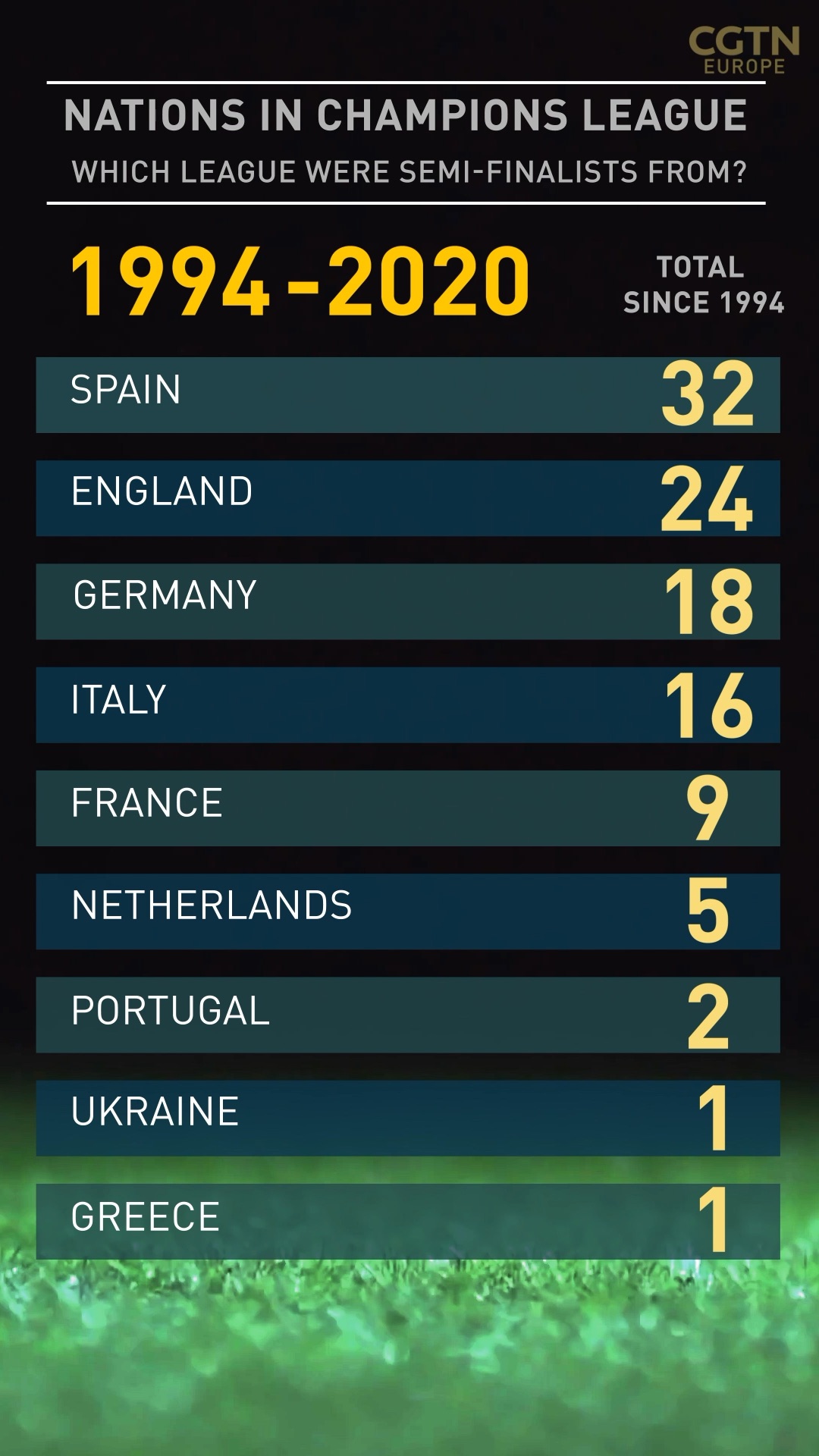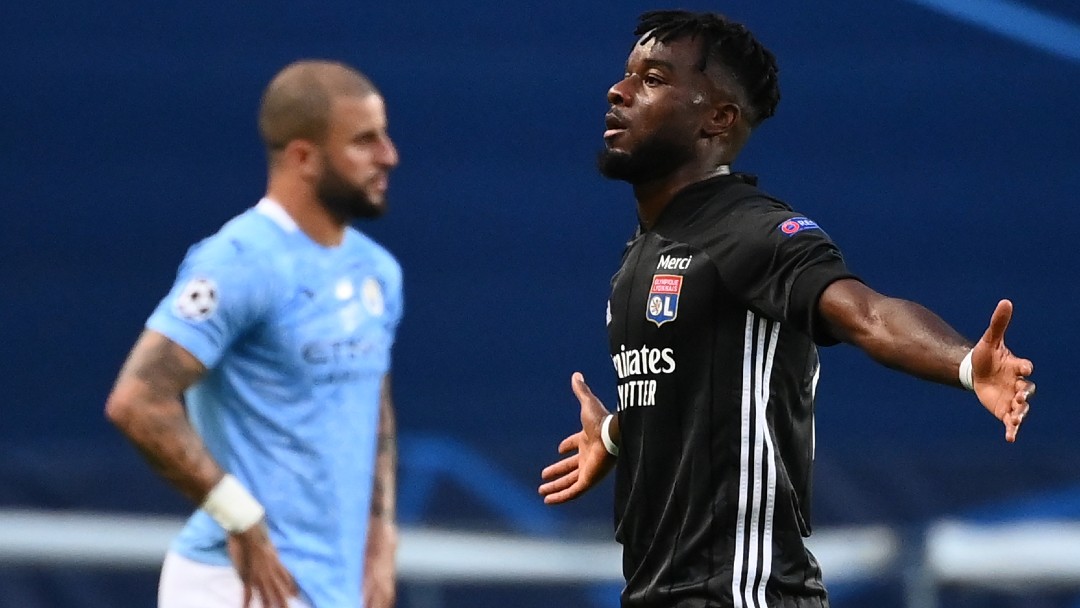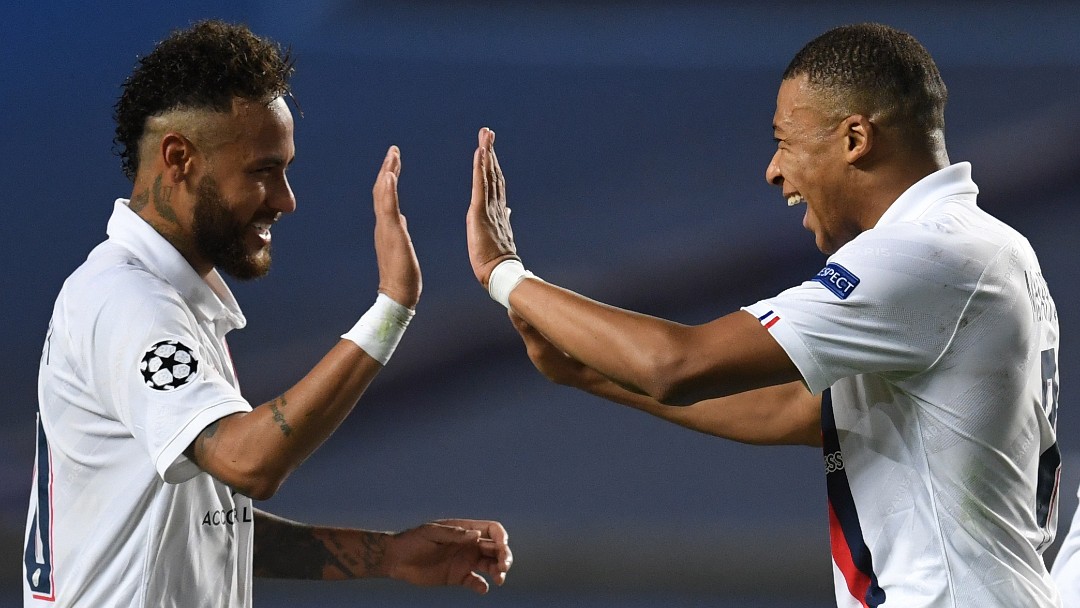00:40

When the final whistle sounded at Lisbon's Estadio Jose Alvalade on Saturday 15 August, it didn't just end a quarter-final - it ended a quarter-century.
Lyon's 3-1 Champions League victory over Manchester City brought down the curtain on a 23-year domination of Europe's premier football competition by clubs from Spain and England – and confirmed the rise of Germany and France in their place.
With two representatives each in the semi-finals, to be held on Tuesday and Wednesday in Lisbon, the German Bundesliga and French Ligue 1 can justifiably claim continental pre-eminence in perhaps the planet's most lucrative spectator sport. Meanwhile, neither England's Premier League nor Spain's La Liga will have a team among Europe's final four, for the first time since 1996.
European football's established power-bases
It may seem premature or unwise to dismiss teams from England and Spain: after all, those nations have provided 10 of the last 12 Champions League winners. But the distribution of semi-finalists since the 1990s reorganization of the European Cup into the Champions League tells an interesting story.
First, a note of explanation. Depending on a coefficient analyzing how well their teams have done in recent seasons, some leagues supply more than one team – up to four in some cases. Naturally, this increases the chances of strong leagues dominating the competition, even if the selection of extra teams from any given country gives rise to the old joke that the Champions League is neither a league nor just for champions.
Spain, England, Germany and Italy are the countries currently allowed four entrants each. Between them, in the 27 seasons from 1993/94 to now, the quartet has provided 90 of the 108 semi-finalists – so more than three out of the four on average each year.
Spain alone has provided almost 30 percent of the semi-finalists. This is the first time since 2007 that la Liga will not have had a representative in the final four. The country's traditional big two teams, Barcelona and Real Madrid, are either undergoing rebuilding or are deeply in need of it. On Thursday, Barcelona astonishingly lost 8-2 to Bayern Munich, the club's biggest defeat since 1946.
England falls as Germany rises
England's Premier League is the next-biggest provider of semi-finalists, with 24. English clubs have not been ever-present, frequently struggling to combine continental campaigns with a competitive domestic league.
Although the Premier League provided both finalists last season – Liverpool and Tottenham – that was the first time for a decade that England had multiple representatives in the semi-finals. Following the dominance of 2007 to 2009, when the Premier League provided three of the four semi-finalists for three successive seasons, that demonstrates how success can shift between leagues.

Maxwel Cornet, of French team Lyon, celebrates his Champions League quarter-final goal against Manchester City on Friday 15 August. /Franck Fife/Pool/AFP
Maxwel Cornet, of French team Lyon, celebrates his Champions League quarter-final goal against Manchester City on Friday 15 August. /Franck Fife/Pool/AFP
This last decade also reflects the rise of German football. Even before this season's results, the Bundesliga had provided more semi-finalists since 2010 (nine) than the Premier League (seven). True, seven of those nine were Bayern Munich, the Bavarian superclub which has now won eight successive Bundesliga titles, but that level of consistency is a marked change from the previous decade: from 2003 to 2009, no German team reached the semis at all.
Italy loses its way, but who will replace it?
That temporary German dearth in the first decade of this century was partly due to the presence of the fourth and final traditional Champions League superpower. Italy's Serie A has had 16 semi-finalists, tucked just behind Germany's 18.
In 2003, Italy provided three of the final four, but that was something of a last hurrah for a league which was unquestionably Europe's top destination in the 1980s and early 1990s. With only four semi-finalists in the past 13 seasons, Serie A has been somewhat elbowed out of elite European club football.
The question is who might replace it, and France is currently looking likely. Not only is the national team the current world champions (and favorites for the delayed European Championships), but Paris St-Germain finally appears to be realizing its owners' ambition to be a fixture at Europe's top table.
Boosted by Qatari cash, PSG's team includes the two most expensive players in football history: Brazilian Neymar, prised from Barcelona in a game-changing deal some valued at half a billion dollars, and the brilliant young French striker Kylian Mbappe. The club has won seven of the last eight Ligue 1 titles, often by a country mile, but hadn't reached the Champions League semi-finals until this year.

Paris Saint-Germain's forwards Neymar (L) and Kylian Mbappe, who commanded the two most expensive transfer fees in football history, celebrate reaching the Champions League semi-final. /David Ramos/Pool/AFP
Paris Saint-Germain's forwards Neymar (L) and Kylian Mbappe, who commanded the two most expensive transfer fees in football history, celebrate reaching the Champions League semi-final. /David Ramos/Pool/AFP
There they will face another rising power: Germany's RB Leipzig, established a mere 11 years ago and rocketing upward ever since. Those fig-leaf initials barely hide the power behind the thrust. The club is completely owned and funded by energy-drink manufacturer Red Bull, and with Europe's brightest young coach Julian Nagelsmann – a tender 33 years old, but already coveted by superclubs – in charge, Leipzig could well spike PSG's guns in a fascinating clash of two hugely ambitious organizations.
That ambition demonstrates that football is still a sport capable of change, no matter how much the traditionally powerful clubs attempt to maintain the status quo. This will be evolution rather than revolution – after all, the same six countries have provided all the semi-finalists for the past 16 seasons – but the rise of new clubs suggests the power centers of European football may be on the move.